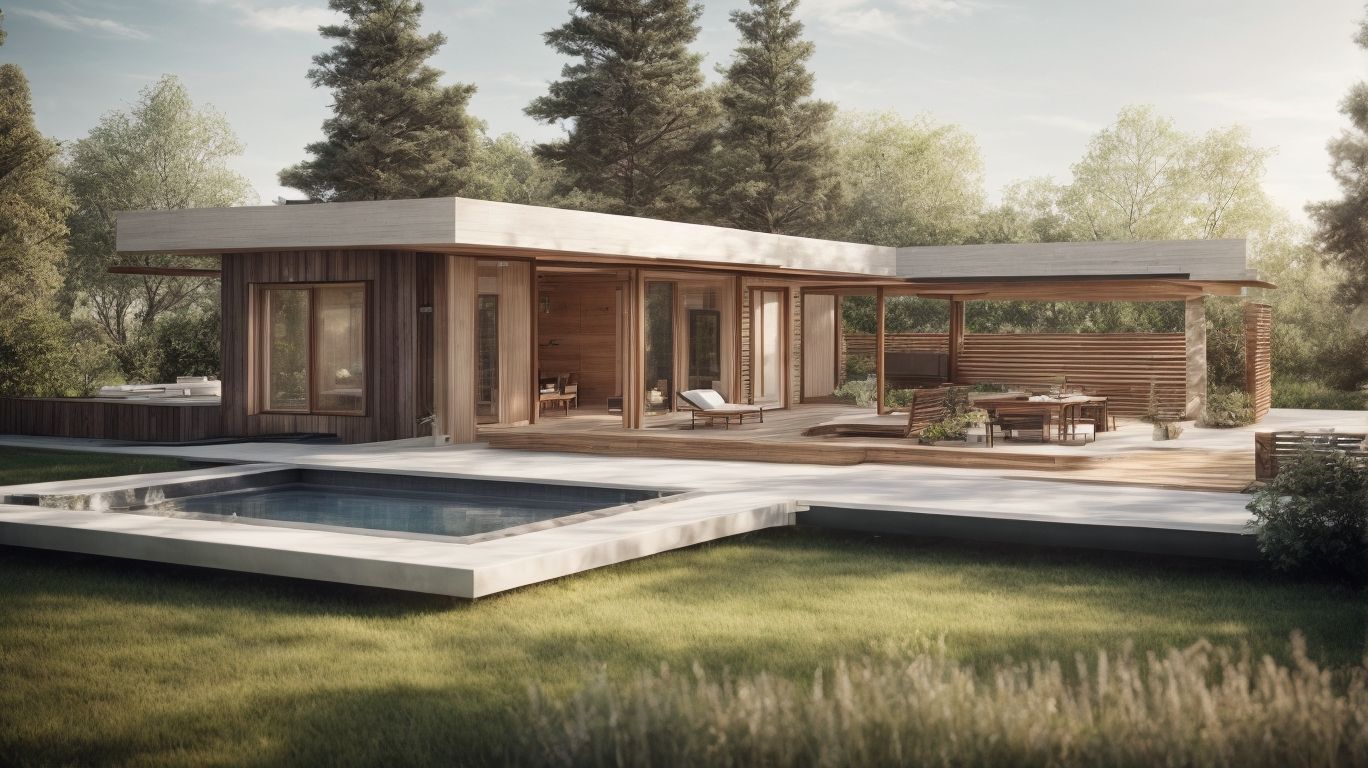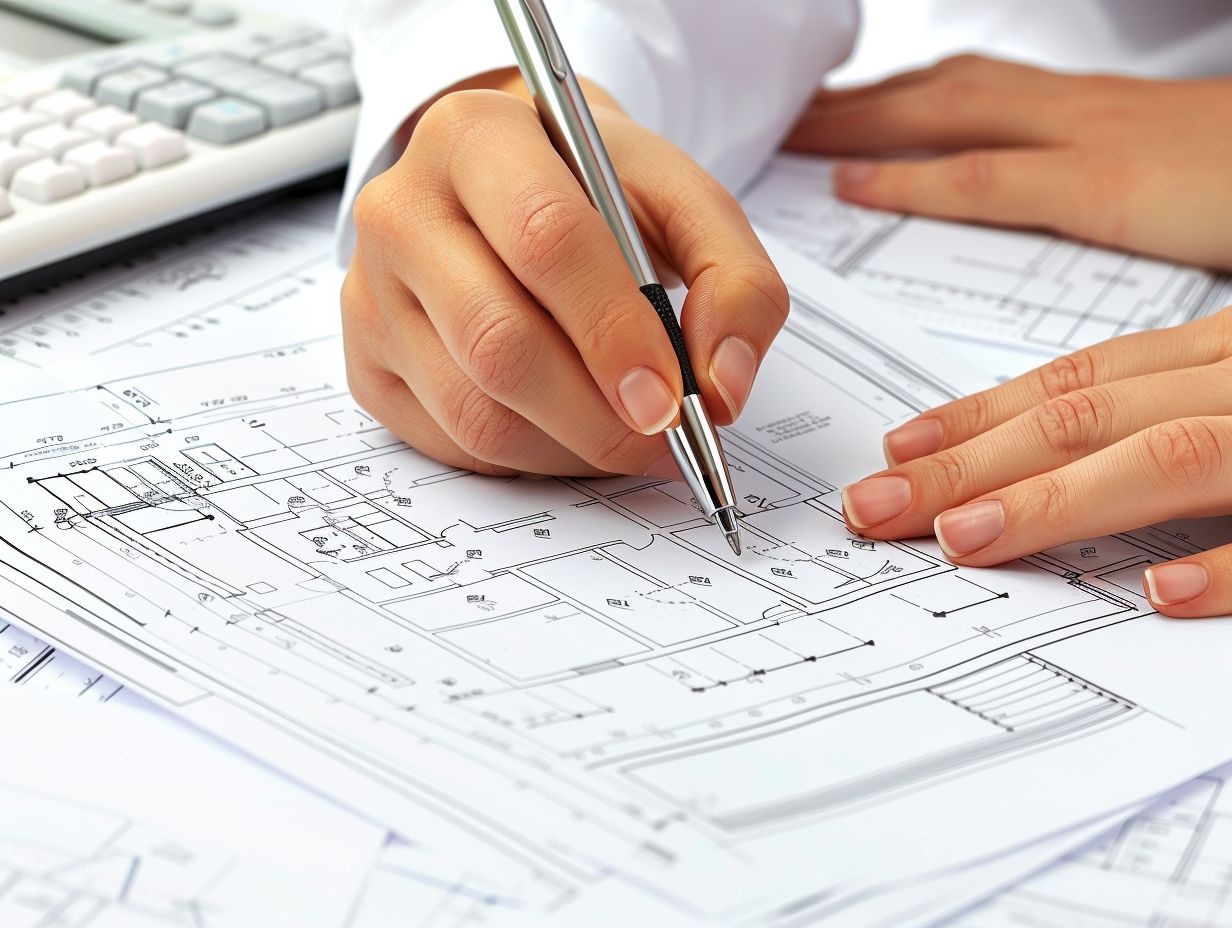
Sustainable Home Design: Structural Engineering Insights
Sustainable home design is a crucial consideration in today’s world, as we strive to reduce our environmental impact and create healthier living spaces. In this article, we will explore the key principles, environmental, economic, and social benefits, and the role that structural engineering plays in sustainable home design.
Understanding the importance of sustainable home design and the ways in which homeowners can incorporate these principles into their homes is essential for creating a more environmentally friendly and economically viable living space. We will delve into the ways in which structural engineering can contribute to sustainable home design, from designing for natural disasters to incorporating renewable energy sources. Join us as we explore the fascinating world of sustainable home design and the insights provided by structural engineering in this context.
What Is Sustainable Home Design?
Sustainable home design refers to the creation and construction of living spaces that prioritize eco-friendly and energy-efficient practices, aiming to minimize environmental impact while promoting sustainable living.
This design approach involves utilizing green construction techniques, sustainable materials, and innovative technologies to reduce energy consumption and waste. By employing solar panels, energy-efficient appliances, and proper insulation, sustainable homes can significantly decrease their carbon footprint and lower utility costs. Sustainable home design incorporates natural ventilation, daylight optimization, and water-efficient fixtures, fostering a healthier and more environmentally conscious lifestyle for residents.
The integration of sustainable design principles not only benefits the environment but also enhances the overall quality and comfort of living spaces.
Why Is Sustainable Home Design Important?
Sustainable home design holds significant importance due to its positive impact on the environment, economy, and society, making it a crucial aspect of modern living and construction.
It plays a vital role in reducing the carbon footprint through energy-efficient construction, use of renewable materials, and sustainable waste management. This not only helps in preserving natural resources but also minimizes pollution and contributes to a healthier environment for future generations.
Sustainable home design promotes economic sustainability by reducing energy and water consumption, leading to cost savings for homeowners and enhancing property values. It fosters social well-being by creating healthier and more comfortable living spaces, promoting community engagement, and fostering a sense of environmental responsibility among residents.
What Are The Environmental Benefits Of Sustainable Home Design?
Sustainable home design offers a range of environmental benefits, including reduced carbon footprint, energy conservation, and the promotion of green building practices, contributing to a healthier planet and ecosystem.
It plays a crucial role in curbing carbon emissions by incorporating energy-efficient technologies such as solar panels, LED lighting, and smart home systems. The integration of green building principles, such as using renewable and recyclable materials, reduces environmental impact and fosters sustainability.
Sustainable homes often prioritize natural lighting and ventilation, further conserving energy and enhancing indoor air quality. These design elements collectively contribute to a greener, more environmentally sustainable future.
What Are The Economic Benefits Of Sustainable Home Design?
The economic benefits of sustainable home design encompass long-term cost savings, increased property value, and the utilization of sustainable technologies and practices, offering financial advantages to homeowners and developers alike.
By incorporating sustainable practices, homeowners can reduce energy and water consumption, leading to lower utility bills and overall operational costs. The integration of sustainable technologies like solar panels, smart thermostats, and energy-efficient appliances enhances the property’s value, attracting environmentally conscious buyers and commanding premium prices in the real estate market.
Embracing economic sustainability through sustainable home design not only fosters environmental stewardship but also brings significant financial rewards in the long run.
What Are The Social Benefits Of Sustainable Home Design?
Sustainable home design offers numerous social benefits, including improved indoor air quality, enhanced community well-being, and the promotion of sustainable solutions and innovations that contribute to a more harmonious living environment.
These sustainable solutions and innovations not only enhance the quality of indoor air but also promote a sense of community well-being by fostering a more eco-conscious and responsible way of living. With sustainable home design, homeowners can incorporate features such as natural ventilation, non-toxic building materials, and energy-efficient systems, which not only reduce their environmental footprint but also inspire others in the community to adopt similar practices.
This not only benefits individual households but also creates a positive ripple effect, promoting social sustainability and a healthier, greener future for all.
What Are The Key Principles Of Sustainable Home Design?
The key principles of sustainable home design revolve around energy efficiency, the use of sustainable materials, water conservation, indoor air quality, natural lighting, and proper insulation, forming the foundation for environmentally conscious and eco-friendly living spaces.
These principles promote the use of eco-friendly construction methods and designs that harness the power of renewable energy sources such as solar panels and passive heating and cooling techniques. Incorporating sustainable materials like bamboo, reclaimed wood, and recycled glass not only reduces the environmental footprint but also creates healthier indoor living environments by minimizing harmful chemicals and volatile organic compounds. Maximizing natural lighting through strategic window placement and utilizing energy-efficient lighting solutions contributes to reduced energy consumption.
Energy Efficiency
Energy efficiency stands as a paramount principle in sustainable home design, focusing on thermal performance, energy conservation, and the implementation of technologies and strategies to minimize energy consumption and waste.
It plays a crucial role in reducing the reliance on fossil fuels, thereby decreasing greenhouse gas emissions and mitigating environmental impact. From insulation and air sealing to high-efficiency appliances and renewable energy systems, the integration of energy-efficient technologies can significantly lower energy bills and enhance indoor comfort. Sustainable technologies such as smart thermostats, LED lighting, and passive solar design contribute to creating healthier and more eco-friendly living spaces.
Use Of Sustainable Materials
The use of sustainable materials is a fundamental principle in sustainable home design, emphasizing the incorporation of renewable materials and environmentally friendly building materials to minimize environmental impact and promote eco-friendly construction practices.
These materials not only reduce the carbon footprint of a home but also contribute to creating a healthier indoor environment for its occupants. Incorporating renewable materials, such as bamboo, cork, reclaimed wood, and recycled metals, is a key strategy in sustainable home design. By choosing these materials, homeowners can significantly reduce the depletion of natural resources and the release of harmful emissions associated with conventional building materials. This approach aligns with the broader goal of environmental sustainability, paving the way for more responsible and eco-conscious living spaces.
Water Conservation
Water conservation plays a crucial role in sustainable home design, focusing on efficient water usage, sustainable practices, and the reduction of environmental impact through responsible water management strategies.
By incorporating water-efficient fixtures such as low-flow toilets, aerated faucets, and rainwater harvesting systems, homeowners can significantly reduce their water consumption. Sustainable landscaping practices, like using drought-resistant plants and implementing rain gardens, can minimize water usage and enhance natural water filtration. These strategies not only lower water bills but also contribute to the overall reduction of environmental impact, promoting a more sustainable and environmentally conscious approach to home design.
Indoor Air Quality
Maintaining high indoor air quality stands as a vital principle in sustainable home design, promoting eco-friendly solutions and sustainable practices to create healthier living environments for occupants.
By embracing sustainable solutions, architects and designers can integrate materials and ventilation systems that reduce indoor air pollutants, such as volatile organic compounds (VOCs) and allergens. Prioritizing natural airflow, using low-emission building materials, and incorporating air purifying plants, contribute to optimizing indoor air quality. This holistic approach not only enhances the well-being of the occupants but also aligns with the broader goal of creating environmentally responsible and sustainable homes.
Natural Lighting And Ventilation
Incorporating natural lighting and ventilation is a key principle in sustainable home design, leveraging sustainable innovations to maximize energy efficiency and create comfortable living spaces that harness natural elements for environmental benefit.
This approach not only reduces the reliance on artificial lighting and air conditioning but also promotes a healthier indoor environment. By strategically positioning windows, skylights, and other openings, homes can optimize natural light while minimizing heat gain and loss. Cross-ventilation systems and passive cooling techniques contribute to maintaining optimal indoor temperatures without excessive energy consumption. These design considerations demonstrate the seamless integration of sustainable innovations, ultimately reducing the ecological footprint of residential architecture.
Proper Insulation
Proper insulation is an essential principle in sustainable home design, contributing to enhanced thermal performance, energy efficiency, and the use of sustainable materials to create well-insulated and eco-friendly living spaces.
It plays a crucial role in maintaining a comfortable indoor environment, reducing the reliance on heating and cooling systems, and minimizing energy consumption, thereby lowering utility bills. By using sustainable materials for insulation, homeowners can contribute to eco-friendly construction and reduce their carbon footprint. Effective insulation also helps in noise reduction and overall comfort, making it a fundamental aspect of sustainable and efficient home design.
What Role Does Structural Engineering Play In Sustainable Home Design?
Structural engineering plays a pivotal role in sustainable home design, encompassing the integration of sustainable technologies, the establishment of resilient structural systems, and the promotion of eco-friendly construction practices to ensure the structural integrity and sustainability of residential properties.
It is through the utilization of sustainable technologies that structural engineers are able to optimize energy efficiency, incorporate renewable energy sources, and reduce environmental impact. By integrating these innovative technologies into the design and construction processes, homes can be equipped with environmentally conscious features such as solar panels, green roofs, and advanced insulation systems. These contribute to the overall sustainability of the structure while simultaneously reducing its carbon footprint and promoting eco-friendly living spaces.
Designing For Natural Disasters
Structural engineering addresses the imperative of designing for natural disasters in sustainable home design, aiming to implement resilient construction methods aligned with sustainable development goals to mitigate the impact of natural calamities on residential structures.
This involves employing sustainable construction methods that focus on using environmentally friendly materials and ensuring energy efficiency, thus supporting sustainable development goals. By integrating resilient construction techniques such as earthquake-resistant foundations, wind-resistant designs, and flood-proofing measures, structural engineers enable homes to withstand the forces of nature. This approach not only safeguards homeowners but also contributes to long-term environmental sustainability, aligning with the broader objectives of sustainable development.
Using Sustainable Materials In Construction
The utilization of sustainable materials in construction is a core focus of structural engineering in sustainable home design, integrating green engineering principles and sustainable construction techniques to promote eco-friendly and resilient building practices.
This approach involves the careful selection and incorporation of renewable resources, such as bamboo, reclaimed wood, and recycled materials, to minimize environmental impact while ensuring structural integrity. Green engineering strategies, including passive solar design, natural ventilation, and energy-efficient heating and cooling systems, are also implemented to enhance the overall sustainability of the construction.
By embracing these sustainable practices, structural engineers play a vital role in reducing carbon emissions and creating healthier, more sustainable living environments for future generations.
Proper Placement And Orientation Of The Home
The proper placement and orientation of the home represent critical considerations in sustainable home design, involving structural engineering expertise to optimize sustainable development and sustainable house design principles for enhanced environmental impact and energy efficiency.
It plays a pivotal role in harnessing natural resources such as sunlight and wind to reduce energy consumption and enhance thermal comfort. Proper placement takes advantage of passive solar heating in colder climates and minimizes solar heat gain in warmer regions. The orientation of the home can maximize natural ventilation, reducing the reliance on mechanical cooling systems. These design considerations profoundly impact the overall sustainability of a home, contributing to reduced carbon footprint and long-term energy savings.
Incorporating Renewable Energy Sources
Incorporating renewable energy sources is a key aspect of structural engineering in sustainable home design, emphasizing the integration of sustainable technologies and practices for energy conservation and reduced environmental impact.
This integration allows for the implementation of solar panels, wind turbines, and geothermal systems to harness the power of nature and reduce reliance on traditional energy sources. By using sustainable technologies, such as energy-efficient heating and cooling systems and smart home automation, homeowners can further minimize their energy consumption and carbon footprint.
The collaboration between structural engineering and renewable energy plays a crucial role in sustainable home design, promoting a greener and more environmentally responsible way of living.
Ensuring Structural Integrity And Durability
Ensuring structural integrity and durability is a paramount responsibility of structural engineering in sustainable home design, focusing on sustainable construction practices with low environmental impact to create resilient and long-lasting residential structures.
This emphasis on structural integrity not only ensures the safety and longevity of a home but also plays a crucial role in aligning with sustainable construction principles. By integrating environmentally friendly materials and innovative construction techniques, the structural engineering aspect of sustainable home design contributes significantly to reducing the overall environmental impact of residential building projects.
In essence, prioritizing durability and resilience in the design and construction of homes promotes sustainability and minimizes the ecological footprint, aligning with the broader goals of creating greener and more sustainable living spaces.
How Can Homeowners Incorporate Sustainable Design In Their Homes?
Homeowners can incorporate sustainable design in their homes through the adoption of sustainable techniques, the utilization of eco-friendly materials, and the integration of innovative sustainable home technologies, thereby contributing to a greener and more sustainable living environment.
These sustainable techniques could include energy-efficient HVAC systems, solar panels for renewable energy, and water-saving fixtures. Utilizing eco-friendly materials such as bamboo flooring, recycled glass countertops, and low-VOC paints can significantly reduce the environmental impact of home construction and renovation.
Integrating innovative sustainable home technologies, such as smart home energy management systems and water-efficient appliances, can further enhance the long-term sustainability of a home. By incorporating these elements, homeowners not only reduce their carbon footprint but also promote a healthier planet for future generations.




No Comments